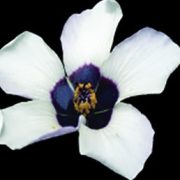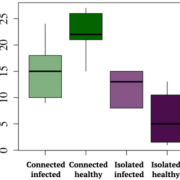
Cuticle chemistry in Hibiscus iridescence
Plant Science Research WeeklyThe long, long history of plant-pollinator interactions has led to a stunning variety of flower forms, including variations in petal color and iridescence. Color is caused by the accumulation of various pigments that selectively absorb certain wavelengths of light, whereas iridescence arises from surface…

Calcium fluxes mediate sensitive plant responses
Plant Science Research WeeklyPlants that respond to touch, like Mimosa pudica (aka the sensitive plant) are great ways to introduce children to the fascination of plants. If you haven’t had the chance to explore this plant, a touch to a leaflet causes the leaflets to fold into themselves, and recurring touches cause the leaf to…

Staying connected helps plant population fitness
Plant Science Research WeeklyMany animals, including humans, tangibly benefit from living socially. Does this benefit extend to plants? A recent study by Höckerstedt et al. says it does. The authors studied a wild host-pathogen population, Plantago lanceolata, and its obligate powdery mildew pathogen Podosphaera plantaginis in…

Plant Science Research Weekly: December 2, 2022
WWR Full PostReview: The power and perils of de novo domestication using gene editing
I’m excited by the ways that knowledge about plant developmental and metabolic programs is being used to make new varieties of plants. This excellent review describes some of these applications such as changes in fruit size…

A tetratricopeptide repeat protein promotes heading in rice
The Plant Cell: In a NutshellZhang et al. discover how a tetratricopeptide repeat protein promotes heading by facilitating florigen transport in rice
Background: Hd3a and RFT1 are mobile flowering signals that promote the floral transition in rice and were proposed to function as florigens that play major roles under short-day…

